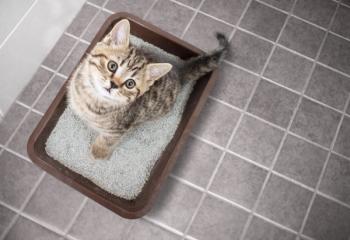
- dvm360 May 2021
- Volume 55
Tips for managing diabetes in dogs and cats
Successful management of diabetes in veterinary patients requires patience, data, and an individualized approach.
Diabetes occurs in dogs and cats and can be a frustrating disease to manage. During a recent
Making the diagnosis
For canine patients, the presence of hyperglycemia and glucosuria is usually sufficient to diagnose diabetes. To avoid a delayed diagnosis when sending samples to an external laboratory for analysis, Kvitko-White recommends that an in-house blood glucose level be performed on all patients presenting with polyuria/polydipsia.
Diagnosing diabetes in cats is a bit more challenging. Kvitko-White notes that even blood glucose levels in the 400-mg/dL range might occur from transient stress hyperglycemia, making hyperglycemia and glucosuria alone unreliable for making the diagnosis. Even the presence of ketonuria does not confirm the diagnosis. In cats, a fructosamine level is the most reliable way to confirm the diagnosis.
Choosing an insulin
Insulin therapy is the cornerstone of diabetes management in veterinary patients, so choosing the best insulin for each patient is crucial. Veterinarians should consider the insulin’s duration of action (short-, intermediate-, or long-acting), patient size and species, the owner’s ability to administer insulin and monitor the patient, and anticipated costs to the owner. Initial dosing should be based on the patient’s lean body weight and insulin type.
Kvitko-White discussed her personal preferences for insulin in patients of various sizes and species:
- Small- to medium-sized dogs: Lente insulin (Vetsulin; Merck Animal Health) is an intermediate-acting insulin approved for use in dogs and cats. Vials should be replaced every 42 days.
- Larger dogs: Insulin detemir (Levemir; Novo Nordisk) is a highly potent, long-acting insulin. This allows smaller doses for large patients, contributing to cost savings over time.
- Cats: Insulin glargine (Lantus; sanofi-aventis). Kvitko-White noted that published recommendations often list Vetsulin or ProZinc (Boehringer-Ingelheim) as the preferred insulin types because they are FDA-approved, not because they have superior control in cats.
The cost of insulin, especially the long-acting insulins such as detemir and glargine, can be alarming for some pet owners. Kvitko-White said that because vials of these insulins can be used for 6 months, owners of large dogs and cats will save money over time despite the higher up-front cost. For large dogs, shorter-acting insulins require higher doses, requiring frequent replacements, sometimes more than monthly. For cats, shorter-acting insulins are less effective and need to be replaced more frequently because of their shelf-life.
An alternative insulin for small- to medium-size dogs whose owners are cost conscious is generic NPH insulin. This is not Kvitko-White’s first choice for any patient as its duration of action is on the shorter side, typically only 4 to 10 hours. Because of this, diabetic control might be difficult to achieve, and the insulin sometimes needs to be dosed every 8 hours. However, these vials can be kept refrigerated for 30 to 60 days before needing replacement.
Dietary management
“When you diagnose a pet with diabetes, you have to prescribe 3 things: insulin, syringes, and a prescription diet,” Kvitko-White said. Diabetic diets are low in carbohydrates, especially simple sugars. They use complex carbohydrates and fiber to slow digestion. The goal of these diets is to minimize fluctuations in blood glucose, improve satiety, minimize pancreatitis risk, and promote weight loss.
Meal-feeding is important for dogs receiving short- to intermediate-duration insulins. They should consume at least half of their meal before receiving their insulin dose. For meal-fed dogs, snacks are OK if they are limited to less than 10% of the total caloric intake and are given in consistent amounts and at consistent times. Ideal snacks include apples, carrots, green beans, low-fat proteins, and sweet potatoes.
Dietary modification is crucial for feline patients to reach a remission state. Their diet should be high in protein and low in carbohydrates. For cats on long-acting insulin such as glargine, meal feeding is not necessary and grazing throughout the day with small, frequent meals may be ideal due to glargine’s slow onset of action. Canned food is preferred to dry food as it has more moisture and protein, which promotes satiety and weight loss.
The role of blood glucose curves in monitoring
Kvitko-White knows monitoring is “the frustrating part” of diabetes management. Just as there are numerous insulin options for veterinary patients, there are also many monitoring strategies. Her preference is to use blood glucose curves as the primary monitoring method obtained in the traditional way or by using continuous blood glucose monitoring systems, including the FreeStyle Libre system (Abbott). Curves allow identification of when the nadir occurs, how low the blood glucose goes at the nadir, the insulin’s duration of action, and average glucose during the day. The first curve should be performed within 1 to 2 weeks of starting insulin.
In an ideal curve, blood glucose should be measured before feeding and insulin administration and then every 2 to 3 hours throughout the day depending on the type of insulin. Ideally, the patient is fed in the hospital and the veterinary team can observe the owner administering the insulin to ensure there are no errors. Because not all patients will eat in the hospital, some patients need to be fed and given their insulin immediately before arriving at the hospital. As far as how long we need to continue measurements, “In reality,” Kvitko-White said, “we need to find the nadir and 2 points on the upswing” before stopping the curve.
Because the timing of the nadir is unpredictable, spot glucose checks are unreliable values to use when adjusting insulin doses. In a shorter-acting insulin, such as NPH, the nadir can occur as early as 1 to 3 hours after dosing. For longer-acting insulins, such as detemir and glargine, a nadir may not occur at all or may occur immediately before the next dose.
At-home monitoring with AlphaTRAK (Zoetis) or
Other monitoring strategies such as fructosamine levels and urine glucose monitoring, can be used in some cases as ancillary diagnostics, but they cannot replace the wealth of information gained from a properly performed blood glucose curve.
Adjusting insulin doses
Once data are collected through a blood glucose curve, the insulin dose can be adjusted. For patients who are underdosed, increase the dose by no more than 10% to 20% at a time. All dosing increases should be based on data. Kvitko-White reminded practitioners that pets that are experiencing a Somogyi effect due to insulin overdose can be just as clinical as an uncontrolled, underdosed patient, so clinical signs alone should not be used to adjust dosing.
For patients in which an overdose is suspected or proven, decrease the dose by 25% to 50% at a time. In extreme cases, some patients need to be taken off insulin for short time. The veterinarian may want to consider changing insulin types when insulin therapy resumes.
Client communication pearls
Clear communication is crucial to successful diabetes management. Preparing owners about what to expect at the time of diagnosis is the best way to establish a strong working relationship. For all pets with diabetes, it is important to stress the importance of insulin therapy. As of now, no oral medications will control blood sugar in veterinary patients.
Dog owners need to know that, with rare exceptions, diabetes—and thus insulin therapy—are forever. In most cases, owners should be prepared for initial control to take 4 to 6 weeks to achieve. But monitoring doesn’t stop there. “Insulin dose is not a shoe size,” Kvitko-White said, adding that requirements will change over time, making routine, long-term monitoring a necessity. Additionally, owners should be prepared for sequelae such as diabetic cataracts.
Education for cat owners should focus on the goal of reverting the pet to a non–insulin-dependent state. Dietary management and insulin therapy are both crucial components of treatment. Some cats, especially those whose diabetes is due to iatrogenic steroid use, can enter remission in as little as 2 weeks, making close monitoring essential.
Finally, Kvitko-White said, it is important for owners to hear that, “if an owner can’t commit to [insulin therapy] financially or they can’t commit to the time commitment of giving insulin twice a day every day for the rest of their pet’s life, it is OK to euthanize.”
Final thoughts
“Diabetes is hard,” Kvitko-White said. Management can be frustrating, but she encourages practitioners to be patient. “I’m a big proponent of collecting data,” she said, because “we cannot predict how a certain insulin will act” in an individual patient.
When patients are not responding as expected, veterinarians should first check client adherence. How is the insulin being stored, handled, and administered? How old is the vial? What diet is the pet eating, and how is the pet being fed? If diabetes control remains elusive despite client adherence, she encourages veterinarians to not be afraid of changing insulin.
She also reminds practitioners that the
Kate Boatright, VMD, a 2013 graduate of the University of Pennsylvania, is a practicing veterinarian and freelance speaker and author in western Pennsylvania. She is passionate about mentorship, education, and addressing common sources of stress for veterinary teams and recent graduates. Outside clinical practice, Boatright is actively involved in organized veterinary medicine at the local, state, and national levels.
Articles in this issue
over 4 years ago
Respiratory disease: Pair up for protectionover 4 years ago
PIMS for corporate practicesover 4 years ago
Reader feedback: The nuances of veterinary practice valuationover 4 years ago
Why so much whiteness in the veterinary profession?over 4 years ago
May is Mental Health Month: Let the healing beginover 4 years ago
A closer look at veterinary unionsover 4 years ago
From new grad to veterinary practice ownerover 4 years ago
Setting, monitoring, and achieving KPIs in veterinary practiceover 4 years ago
Upping your lateral suture gameover 4 years ago
The Dilemma: Time to say goodbyeNewsletter
From exam room tips to practice management insights, get trusted veterinary news delivered straight to your inbox—subscribe to dvm360.






